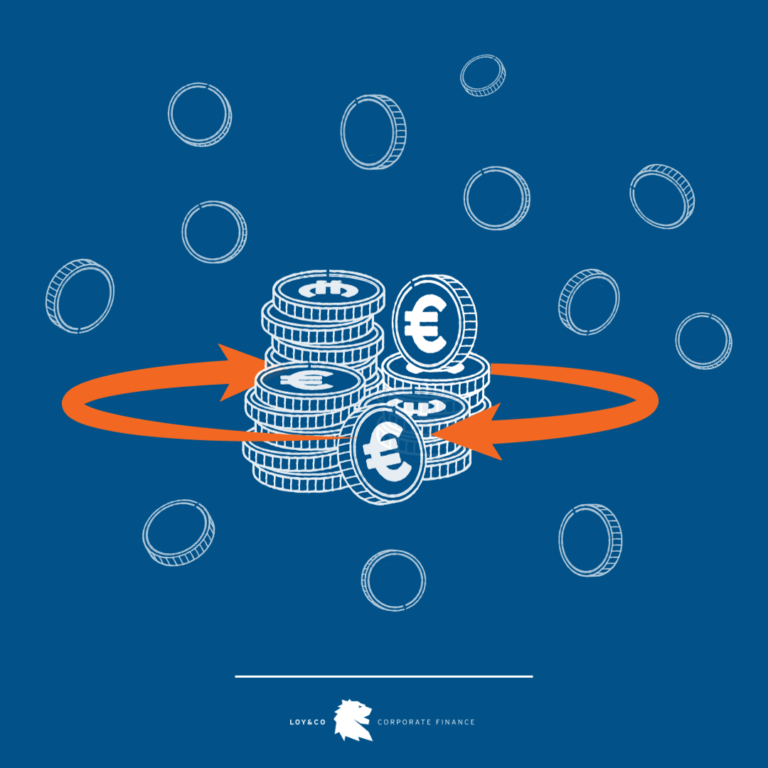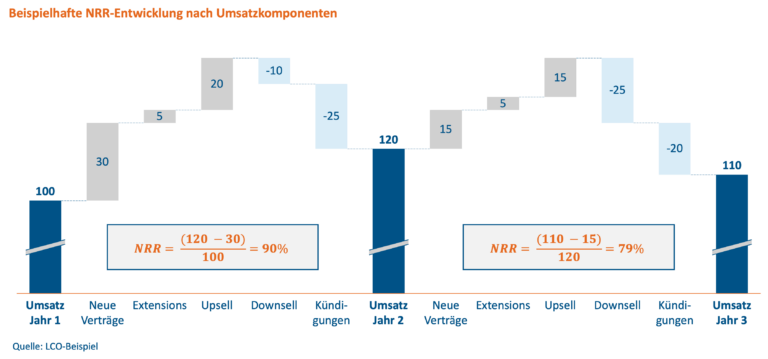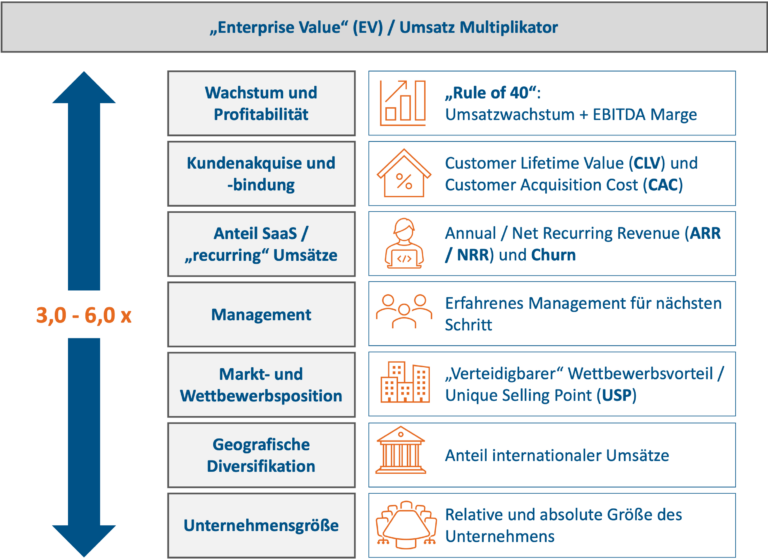What do I need to know about it?
Annual Recurring Revenue (ARR): As already discussed, recurring revenues represent one of the most important value drivers for SaaS companies from an investor perspective. For this reason, the Annual Recurring Revenue (ARR) or Monthly Recurring Revenue (MRR) metric has become widely established.
This metric is calculated by multiplying the number of all active customers bound to a subscription model by the average annual or monthly revenue per customer. For example, if a product with a 3-year contract was sold for €150,000, the ARR for this customer would be €50,000 (€150,000 / 3 years).
Due to the attractiveness of recurring revenues, it is not uncommon in practice for investors to consider only recurring revenues for their valuation (the “ARR multiplier”). Some financial investors even define a minimum percentage of ARR in their investment criteria, above which a software company is even considered a potential target.
Net Recurring Revenue (NRR): Due to its relevance, the development of ARR over time is often a focal point of any due diligence in the software sector. To illuminate this development from various perspectives, a so-called Net Recurring Revenue (NRR) analysis is often conducted.
Here, sales per customer are analyzed over several periods (e.g., months or years) and typically classified into the following categories:
- Sales from new contracts: Customers acquired in the current period
- Sales from existing contracts: Customers who
- extend their contract (“extensions”)
- upgrade their contract (“upselling”)
- downgrade their contract (“downselling”)
- Terminated contracts: Customers who have churned (“churn”)












